Despite oceans covering more than 70% of our planet, we know more about the surface of the moon than we do the big blue. However, what we do know is that the ocean is vital for the health of our entire planet. Feeding millions of people, regulating our climate, storing carbon dioxide and producing oxygen, there are myriad reasons why we should protect and love the underwater world. Keen to learn a few things about this beautiful body of water? Read on for our top ocean facts….
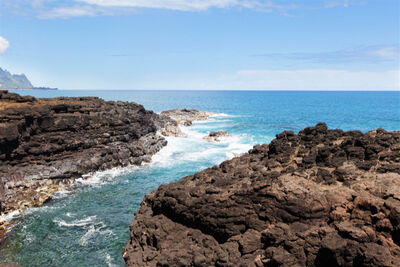
1. Oceans cover more than 70% of the Earth
We're kicking off our ocean fact file by establishing the size of the ocean - and it's big. The watery world covers around 140 million square miles, with the widest part found in the Pacific Ocean, stretching over 12,300 miles from Indonesia to Colombia.
2. The ocean holds 97% of all the water on Earth
Given its size, it's unsurprising that the ocean holds the majority of the planet's water - an estimated 320 million cubic miles. That's enough water to fill around 1.33 sextillion litre-sized milk bottles (to be precise). In contrast, less than 1% of all of the earth's water is fresh, while about 2% is frozen in glaciers and ice caps.
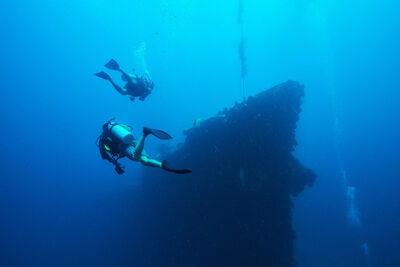
3. The average depth of the ocean is 3,688 metres
Not only is the ocean big, but it's also very deep; on average, it plunges to a whopping 3,688 meters. The deepest point is in the Mariana Trench, known as Challenger Deep, which reaches down to 11,000 meters (this makes it deeper than Mount Everest is tall).
4. The Southern Ocean was only recognised in 2000
For much of history, there were only four oceans: the Pacific, the Atlantic, the Indian and the Arctic. That changed in 2000, when the Southern Ocean was officially recognised by the International Hydrographic Organisation. Surrounding Antarctica, this body of water has long been debated - some claimed it had enough unique characteristics to be defined as its own ocean, while others saw it simply as an extension of its neighbours. Although many now accept its boundaries, typically defined at 60°S latitude, its official limits remain a topic of debate.
5. We have only seen about 5% of the ocean
Our next mind-boggling fact about the ocean is that despite covering over 70% of Earth, we've only mapped about 20% of the ocean floor and have only physically seen 5% of the entire ocean. That means vast underwater mountain ranges, deep trenches and mysterious marine species remain completely undiscovered…
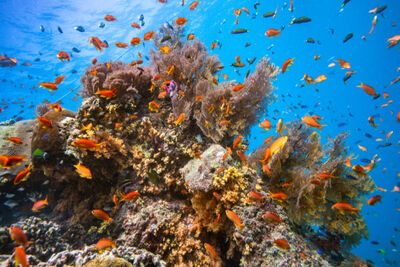
6. The ocean is home to over 240,000 known species
As divers, we love the creatures that inhabit the big blue, and luckily, there's a lot to admire below the waves. The ocean is home to over 240,000 known species, and scientists believe there are millions more to be discovered. All these creatures are vital to the health of the ocean, and either a decline in the numbers or a rapid expansion can have a big knock-on effect for the entire food chain.
7. Coral reefs are some of the most biodiverse ecosystems in the ocean
Coral reefs, particularly those in the Coral Triangle, like Raja Ampat, are some of the most biodiverse ecosystems in the ocean. They provide habitat, food and breeding grounds for around 25% of marine species, an impressive feat considering they only cover 1% of the ocean floor. Sadly, in the last 40 years, we have lost around 50% of our coral reefs. So remember, when diving among beautiful coral reefs in the Seychelles, the Philippines or anywhere else, be careful not to touch or kick any of it, and be sure to wear reef-safe suncream.

8. The ocean is home to the biggest animal on Earth
The blue whale, the largest animal ever to have lived on Earth, calls the ocean home. These gentle giants can grow up to 30 meters long and weigh up to as much as 200 tonnes. While they can be found across the Atlantic, the best places to see them are Baja California in Mexico during the winter months, and Australia's south coast from May to October.
9. Scientists believe that life begins in the oceans
Scientists believe that life first began in the ocean, all the way down in deep-sea hydrothermal vents. By looking at DNA from modern organisms, scientists have been able to trace our earliest common ancestors back to tiny aquatic microbes that live in extremely hot conditions (like in the hydrothermal vents). These vents pump out heat and chemicals that might have powered the reactions needed to kickstart life.
10. One litre of seawater holds 35 grams of salt
If you've ever had an (accidental) mouthful of seawater, you'd know that it's super salty. But why? It all starts in rivers, where running water dissolves minerals and salts and deposits them in the ocean. Underwater volcanic activity and hydrothermal vents also provide a salty boost, as they release additional minerals into the water.
If you're heading to Malta for a diving holiday, be sure to check out the salt pans on Gozo Island. These shallow pools, carved into coastal rock, collect seawater that's left to evaporate under the sun. Eventually, nothing is left but pure sea salt, which is collected and sold - be sure to bring a few euros in cash to buy some.
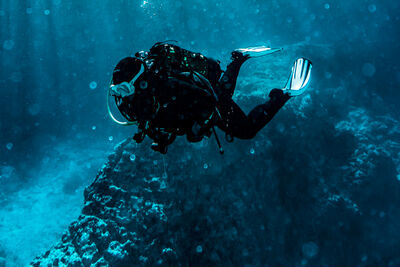
11. The oceans provide half of the world's oxygen
Around 70% of the oxygen we breathe comes from the oceans. This is produced through phytoplankton, tiny plant-like organisms that live near the water surface. These microscopic organisms absorb sunlight and carbon dioxide and release oxygen, just like a plant.
12. The ocean is the world's best carbon sink
Not only does the ocean provide us with most of the oxygen that we breathe, but it also absorbs most of the carbon dioxide that we produce. This makes the oceans vital in the fight against climate change - mangroves alone can remove between 15 and 18 million metric tonnes of carbon dioxide each year.
The oceans are also vital for keeping us cool, and have absorbed 90% of the excess heat humans have created. So, if we want to fight against climate change, we have to protect our oceans.
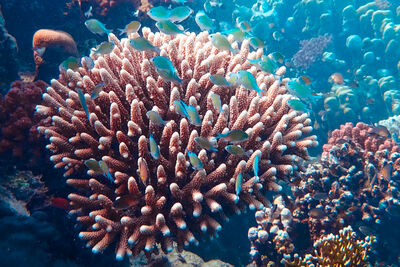
13. The oceans act as the Earth's heart
While the ocean's 'blue forest' - like seagrasses and mangroves - act as the lungs of the Earth, rivalling even land-based rainforests in their carbon-capturing abilities, the ocean itself also acts as the planet's heart. Its powerful currents circulate heat and moisture across the globe, regulating climate and supporting life.
14. Marine genetic resources could be the solution to many of our problems
Marine genetic resources are being used to tackle various problems, from developing cancer treatments (like those found in jellyfish proteins) to addressing climate change. For example, compounds found in marine sponges were vital in developing the drug used in early HIV treatment, and there has been a rise in kelp farming to capture carbon and restore marine ecosystems.
15. The ocean plays a starring role in folklore
While we grew up watching movies that spotlight the ocean - we're looking at you, Finding Nemo - its role in storytelling goes much further back. In Greek mythology, Poseidon ruled the seas with his trident, controlling storms and tides. As a result, sailors would offer sacrifices to him to ensure a safe passage.
It doesn't stop there. In Hindu mythology, the epic tale of Samudra Manthan uses the ocean as the battleground between gods and demons. Meanwhile, Japanese folklore tells of Ryujin, the dragon god of the sea, who ruled an underwater palace and commanded the tides while protecting marine life.
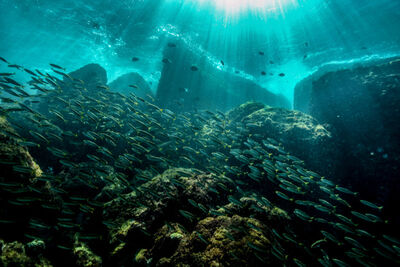
16. There's a lot of light in the deep sea
It's not all doom and gloom down there - the deep sea has a surprising amount of light. This comes from bioluminescent deep-sea creatures' ability to glow in the dark. About 80% of the animals that live between 200 and 1,000 metres deep have this superpower, but as these depths are out of diving range, it can be hard to notice. For something a little more shallow, head to Vaadhoo Island in the Maldives to see the Sea of Stars, a bioluminescent wonder.
17. There are over three million wrecks in the ocean
The ocean holds many stories. In fact, it's home to an estimated three million sunken vessels, with around 15,000 ships that were sunk during WWII alone. In 2023, UNESCO discovered three new wrecks. Well, not new - dating back to the first century BC, second century AD and the 19th century, these ghostly remains hold stories and secrets that keep us diving and exploring. If treasure hunting and underwater history are your thing, then you'd better fin off to Truk Lagoon in Micronesia, the ultimate wreck-head bucket list dive destination.

18. The ocean is calming
A wonderful note to end our ocean fact file on is that the ocean is scientifically proven to be calming. As divers, we already feel calm when we enter the water, but even being near any body of water - be it the ocean, a lake or a river - can have a calming effect on your mind. This phenomenon is called 'blue mind' and refers to the meditative state that we experience when we take a moment to appreciate the big blue.
The 'blue mind' concept was coined by Wallace J Nichols, whose research explores how water can act as an antidote to the overstimulation of modern life. So, there's your next excuse to book a diving holiday… French Polynesia, anyone?
















